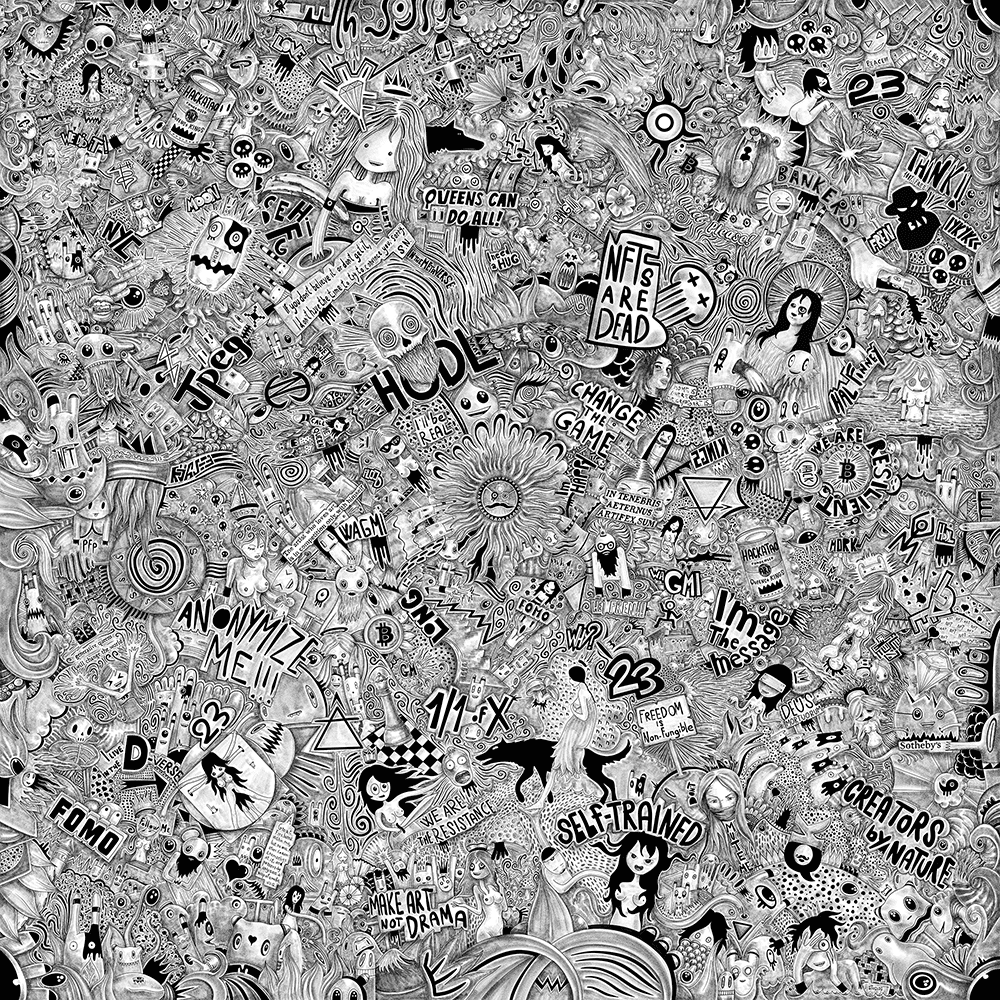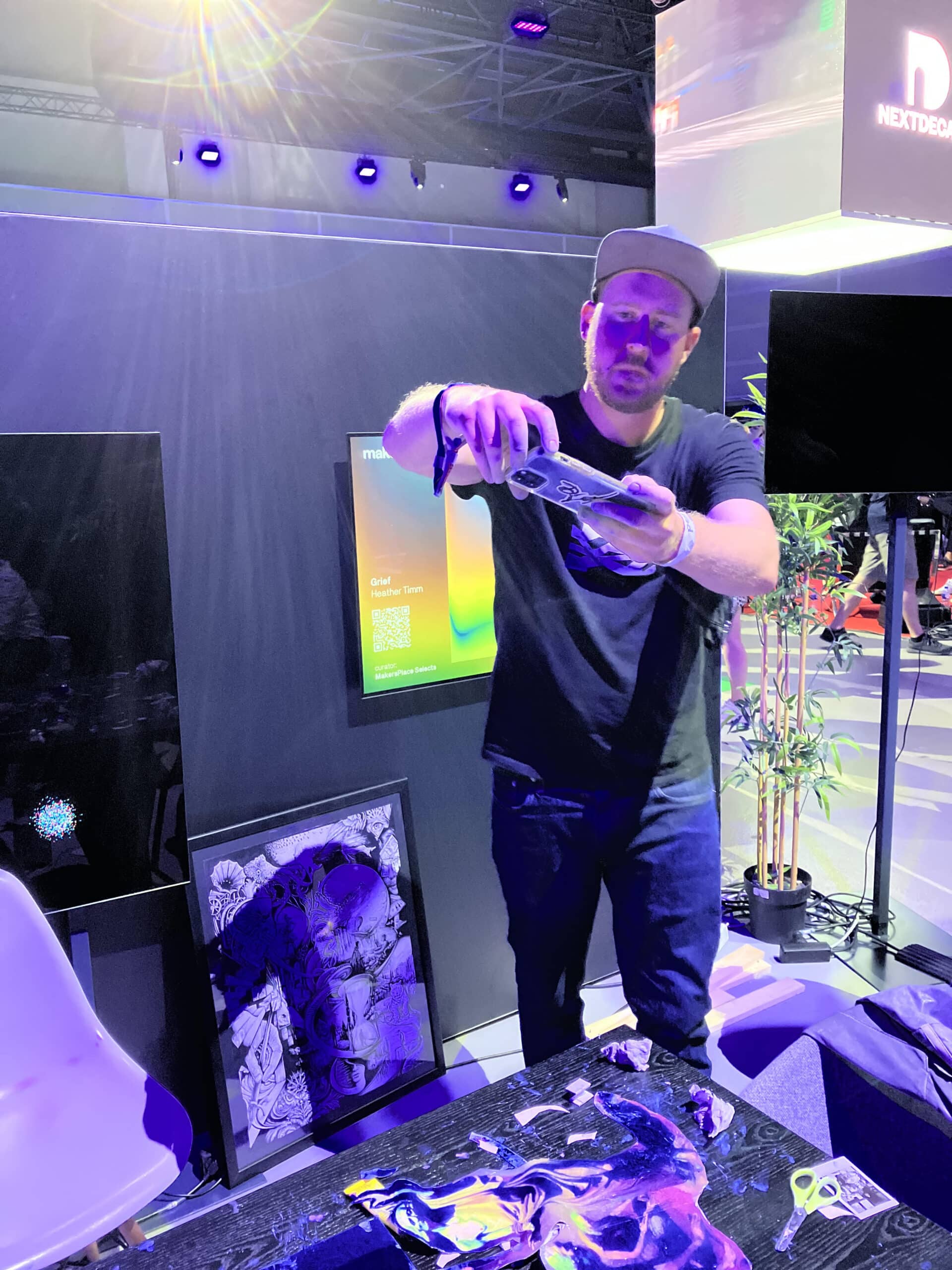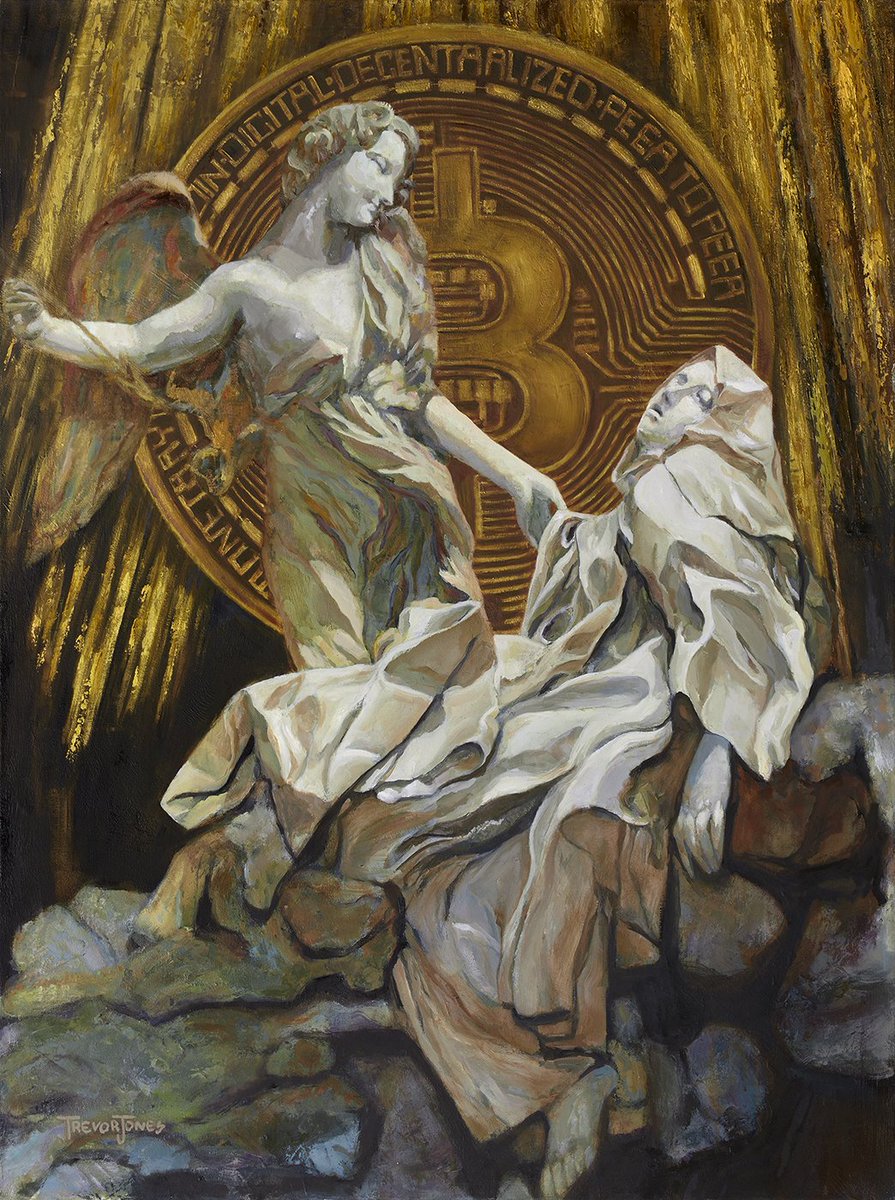The paint was still wet on the canvases encased in bubble wrap and whisked on to an overnight flight from New York City to Lisbon. The brushstrokes were made by MATRing, a proprietary robot built by Artmatr, a digital artwork studio based in Brooklyn. The destination for the artworks created by four digital artists was the MakersPlace AI Art Hackathon at Non Fungible Conference, which took place in Lisbon on June 7 to June 8.
To the uninitiated, AI art just spits out images at the bequest of words typed into a machine. The purpose of the event, promoted as the world’s first, was to dispel such myths and shine a light on the artistic process to the passing conference hall crowd. Over two days the artists had to create work on the fly in response to a series of tasks.
“I wanted to challenge the notion that AI art isn’t art,” says Kayvan Ghaffari, General Counsel at MakersPlace. “Our goal is to honor and embrace the act of creating art as much as the actual art itself. Because for me, and for us, that act of creating art is an end of itself, and it tells a story. It is the process.”
Humans working with AI now co-create more than 20 million images every day and AI art is already starting to make waves in the NFT space. Nevertheless, the medium has yet to win acceptance. By showcasing the work of AI artists in motion the hackathon set out to prove that AI has already become a valuable tool of artistic expression. While few witnessing the artists at work would doubt this, it remains to be seen whether their work or the medium of AI art as a whole will endure. “I’m collecting the history of AI Art,” wrote @crypto17mile in a DM to the artist BLΛC, from whom he purchased a 1/1 work made during the event. BLΛC, who describes himself as an artist specializing in dark surrealism, notes that there has always been a “kickback” against disruptive art ever since the time of The Renaissance.
The hackathon saw digital artists BLΛC, Illustrata, DVK the artist, and DigitalCoy take part in a live creative process that involved collaborations with Trevor Jones, Hackatao, Coldie, and Sasha Stiles to create work auctioned as unique 1/1 pieces on the MakersPlace digital art market.

Over the course of the 48-hour hackathon, the artists were tasked with creating pieces initially inspired by a Stiles poem, ARS AUTOPOETICA, which was revealed to them 24 hours before the hackathon began. The artists spent the opening hours huddled over their laptops navigating an array of AI-based art tools such as Stable Diffusion and Stability AI, along with Photoshop and Procreate, a digital painting App for the iPad. Located at the back of the conference hall, the MakersPlace booth had the artists crammed together on tables next to a sofa, exposed to passersby. “I showed everything,” writes Illustrata. “My prompts, my initial images, and my whole process from Midjourney to Photoshop. It was freeing, if a bit vulnerable, to put all that on display.”
Each AI artist has his or her own path to perfecting the art, learning what does and doesn’t work through the course of their journey. “I’m hoping that much like the Wizard of Oz, you’re kind of pulling the curtain away so that people can really understand how AI can be leveraged as an artist,” says DigitalCoy.
After lunch, the second challenge of the hackathon appeared in the form of an oil painting by Jones who is a traditional painter that has made a transition into the crypto art scene. Jones’s work, The Ecstasy, depicted a luminous Bitcoin Angel and represented a new ingredient that the artists had to integrate into their creative processes. The following day the artists were presented with a work from Hackatao that also included a poem. DVK the artist disclosed the content of the Hackatao poem to Unchained, revealing a work that comes across as a manifesto for how the blockchain can empower artists and creators.
At lunchtime on the second day, Coldie starred in an array of Instagrammable photo opportunities as he went to work with a utility knife and cigarette lighter, cutting and burning four painted canvases of the artists to form one collage, creating a separate work.

A spirit of collaboration rather than competition characterized the hackathon with the artists even consulting each other through the course of the event. No winner was crowned at the end. The perpetual interplay between human and machine through the course of the hackathon created new dimensions of artistic expression. “The goal is to challenge our notions of what art is,” says Ghaffari. “And to see these creative minds create works. To prove that AI art can have a soul.”



